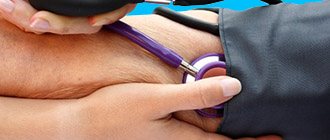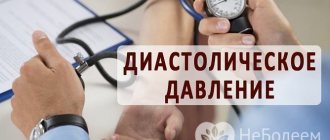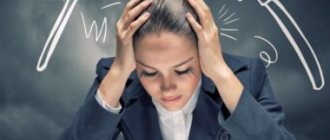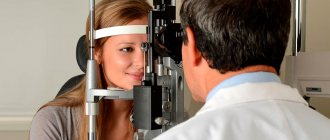12.02.2019
Last modified: March 17, 2021 at 09:24 am
Low blood pressure can occur for a variety of reasons, many of which seem unrelated to the cardiovascular system. One of the factors that can provoke changes in blood pressure is food intake. This condition is called postprandial hypotension and is diagnosed quite rarely, but can cause deterioration in well-being and health problems. Why does blood pressure decrease after eating food and how to get rid of unpleasant symptoms?
Causes
According to doctors, the mechanism of pressure drop after eating is associated with the functioning of the gastrointestinal tract. When food enters the stomach and intestines, blood flows to these organs to support digestion. If the heart responds in time to changes in blood circulation, the peripheral vessels narrow, and the pressure remains at a normal level. In a number of disorders, the cardiovascular system does not have time to respond in time to the outflow of blood, and the pressure drops sharply.
Postprandial hypotension is diagnosed when the patient exhibits the following symptoms:
- “lower” pressure on an empty stomach was above 100 mmHg. Art., and after eating food the readings are below 90 mm Hg. Art.;
- systolic blood pressure decreases by at least 20 mm Hg within 2 hours after eating. Art.;
- There is no pronounced fall, but the patient develops clinical signs of hypotension.
The reasons for a decrease in blood pressure are different - from age-related changes to pathologies of organs and systems.
| Factor causing a decrease in pressure | Why does hypotension develop? |
| Mature age | After age 65, changes occur that increase the risk of postprandial hypotension |
| Organic lesions of the central nervous system | People with brain damage (especially Parkinson's and Alzheimer's diseases) are at risk due to a malfunction of the nervous system |
| Endocrine disorders | The endocrine system affects the functioning of the central nervous system and blood pressure, so if it is disrupted, blood pressure can rise or fall |
| Mental disorders | Neuroses, asthenic syndrome, disorders and other pathologies often cause surges in blood pressure |
| Hemodialysis | In case of renal dysfunction, this procedure may cause unwanted reactions. |
| Diseases of the digestive and biliary systems (pancreatitis, cholecystitis) | Pathologies impair blood circulation in large arteries, causing blood pressure to decrease |
| Pregnancy | The body has a double load, so expectant mothers often feel worse and their blood pressure decreases after eating |
Postprandial hypotension can also develop in other situations - with anaphylactic shock, major blood loss, sepsis. Alcohol abuse increases the risk of disease, since alcoholic drinks provoke disruption of the cardiovascular, urinary and digestive systems.
For reference! The mechanisms for the formation of the condition when blood pressure levels decrease or increase after eating have not yet been studied, so sometimes there are no objective reasons.
Prerequisites for the disease
It is impossible to unequivocally answer the question of why blood pressure drops after eating.
There are some factors that contribute to changes in pressure:
- elderly age. Patients over 65 years of age are susceptible to the disease due to age-related changes occurring in the body;
- organic brain lesions, including Alzheimer's disease and Parkinson's disease;
- mental illnesses, including neurasthenia, psychopathy, neuroses;
- endocrine diseases.
Patients who regularly attend hemodialysis and patients with chronic kidney disease are at risk of developing this disease.
Symptoms
Manifestations of postprandial hypotension are similar to those of other forms of the disease. The patient develops the following symptoms:
- starts to hurt and feel dizzy;
- heart rate increases;
- I feel sleepy and feel very weak;
- increased sweating occurs;
- chest pain is felt;
- visual and speech disturbances are possible.
Important information: Is it possible to shower and bathe with high pressure?
If the pressure drops too quickly, the person may faint. Such falls are dangerous in old age, as they often lead to serious injuries.
Cheese
Aged cheeses also contain amines. Especially dangerous for those who are prone to migraines and react sharply to weather changes are blue cheeses, brie and camembert, which have a moldy crust, and parmesan. They contain the substance tyramine, which causes brain vessels to first contract and then expand sharply. Tyramine also competes with the “happiness hormone” serotonin and displaces it from the body.
Article on the topic
Add pepper. What healthy spices should you replace salt and sugar with?
Diagnostics
Postprandial hypotension can be identified by symptoms that develop only after eating. To make an accurate diagnosis, you need to see a doctor and undergo diagnostics. Blood pressure levels are monitored for several weeks at different times - in the morning before and after breakfast, in the evening. To prescribe the correct treatment, you need to establish the cause of the pathology and eliminate it.
At the first stage, the doctor collects the patient’s complaints and medical history, then prescribes tests. The usual procedure for diagnosing postprandial hypotension includes an electrocardiogram, examination of the digestive tract, and clinical blood and urine tests. The final diagnosis is made after comparing test results and blood pressure readings obtained in different periods.
For reference! In most cases, postprandial hypotension is manifested by increased heart rate, weakness and other symptoms in cases where the patient has concomitant pathologies. Healthy people usually feel normal; changes in blood pressure can only be determined after measurements are taken.
Coffee
Drinking several cups of coffee a day is not a good idea, especially if you have high blood pressure and are sensitive to the weather. Coffee increases blood pressure. Caffeine can cause vasospasm and headaches.
By the way, not only caffeine is dangerous. The drink contains tannins, which are harmful in large quantities: they can cause headaches.
Mysteries of coffee grounds. Why does coffee invigorate some and put others to sleep? More details
What foods to include in your diet to increase blood pressure
Since in postprandial hypertension the cause of a decrease in blood pressure is food intake, it is necessary to correctly formulate the diet and include in it foods that can increase blood pressure:
- Use pickles and marinades in small quantities, so that the total amount of salt does not exceed 15-20 g per day. Sodium retains water and increases blood circulation.
- Spices and herbs increase the secretion of the digestive glands and contribute to the narrowing of the vascular walls.
- The amino acids contained in nuts are beneficial for patients with postprandial hypotension.
- The menu should include vitamins C and B (eggs, liver, yeast, berries), as well as fruits that tone the body - lettuce, celery, sour apples, cabbage.
- Fatty foods increase the concentration of cholesterol in the blood, resulting in increased blood pressure.
- If your blood pressure drops sharply, you can drink a cup of coffee, strong tea, or energy drink.
Foods high in carbohydrates (baked goods, fried potatoes, pasta) help lower blood pressure. Insulin and other substances that are released when it is consumed dilate blood vessels, causing a drop in blood pressure. The development of hypotension is also provoked by a large amount of sugar and its substitutes.
Important information: What are the main risk factors for hypertension?
You need to carefully plan your diet for postprandial hypertension - abuse of fatty foods, spices, and salt can provoke other diseases. In addition, they contribute to excess weight gain, which worsens the condition of the cardiovascular system. You need to eat in small portions, avoiding hunger or overeating. After eating food, it is better not to get up from the table, but to sit quietly for 30-40 minutes. To normalize the condition, it is important to drink a lot - the volume of liquid should not be less than 1.5-2 liters per day.
Even if your blood pressure regularly drops after eating, you should not refuse food, as this can lead to a worsening of the condition. You need to have a full breakfast, lunch, and dinner, following the doctor’s recommendations for creating a diet.
Food and Performance: Explanation of Impact
The intake of certain foods leads to imbalances in systolic (upper) and diastolic (lower) pressure. These indicators characterize the movement of blood through the vessels. When you abuse prohibited foods, the load on the blood system and heart function increases (the balance of indicators is disturbed) and the person suffers from the following symptoms:
- nagging pain in the back of the head;
- sensation of tinnitus;
- pulse quickens;
- profuse sweating;
- shortness of breath and nausea.
After food enters the body, the digestion process begins. In this case, significant energy reserves are spent on the production of acids and enzymes (enzymes). For the process to proceed normally, oxygen is needed, which enriches the blood and accelerates its movement through the veins. A signal is sent from the brain to the heart to begin more intensive work. The speed of blood flow is affected by the fluid in the blood (the thicker it is, the slower the movement).
Note! Eating foods that contain a high percentage of sugar, fat, and sodium leads to slower blood flow and increased workload.
Are there other reasons?
An increase in blood pressure after eating also occurs due to the high content of waste and toxins. These wastes remain from the processing of difficult-to-digest and unhealthy food (they are not promptly removed from the body during the act of defecation).
Important information: Hypertensive patients and pregnant women should not drink: the main harm of mineral water has been identified
A slight increase in blood pressure after eating certain foods is a natural process. If the indicator does not normalize (or remains high even on a diet), this is a reason for urgent consultation with a specialist.
Treatment of postprandial hypotension
Therapy must be comprehensive, including a certain lifestyle, proper nutrition, and medications.
Lifestyle
For any form of hypotension, it is necessary to maintain a healthy lifestyle and give up bad habits, especially smoking and drinking alcohol. Patients benefit from walking, physical therapy, swimming, and light physical activity. If you feel frequently unwell, you can wear special compression stockings that increase blood flow to the heart. They are selected depending on the individual characteristics of the body, adhering to the basic rule - the pressure should be distributed evenly. In the morning you should not get out of bed abruptly - you need to get up gradually, sitting on the edge for a while.
Traditional therapy
Conservative treatment for postprandial hypotension depends on the causes of the disease and the general condition of the person. To relieve symptoms, Levodopa, Octreotide, Midodrine, and other medications are prescribed; to improve the general condition, vitamins and restorative medications are prescribed. Caffeine-containing products, adaptogens, and tonics are effective. To achieve results, conservative therapy is combined with physiotherapy - massage, mud therapy, hydrotherapy. To reduce the manifestations of the disease, it is necessary to determine the underlying pathology and begin to eliminate it.
Attention! It is strictly not recommended to take any medications on your own when blood pressure drops - conservative therapy is selected after consultation with a doctor.
How to properly plan a diet?
There is no special diet for arterial hypotension, just as there are no restrictions on the intake of foods or methods of cooking them. But no one has canceled the rules of healthy eating when there is a decrease in blood pressure after eating. You should absolutely not get carried away with diets, including newfangled ones, such as a raw food diet and blood type diets.
Nutrition for hypotension should be healthy, without dietary restrictions, and must include:
- a large number of green vegetables;
- grains and legumes;
- high-quality fats, sea fish, eggs, chicken meat;
- dairy products from goat milk;
- various fruits;
- not roasted nuts and seeds.
Any hydrogenated fats, synthetic additives, and especially sugar substitutes for hypotension are categorically excluded. A patient suffering from low blood pressure should definitely drink plenty of fluids.
For headaches and general weakness, a quick but short-term effect is provided by strong tea and coffee, cocoa, dark chocolate.
After some time, cheerfulness will be replaced by apathy. The substances contained in these products deplete the body, returning strength for a while, and then increasing fatigue and weakness.
For hypotension, it makes sense to pay special attention to spices, especially hot ones: cayenne pepper, chili pepper. You can use cinnamon in small quantities. Soy is not recommended for low blood pressure. Symptoms of postprandial hypotension are significantly reduced by drinking 0.5 liters of warm water, about 22 degrees.
For postprandial hypotension, fasting is prohibited! Even short-term fasting can lead to secondary arterial hypotension in patients who had normal blood pressure.










